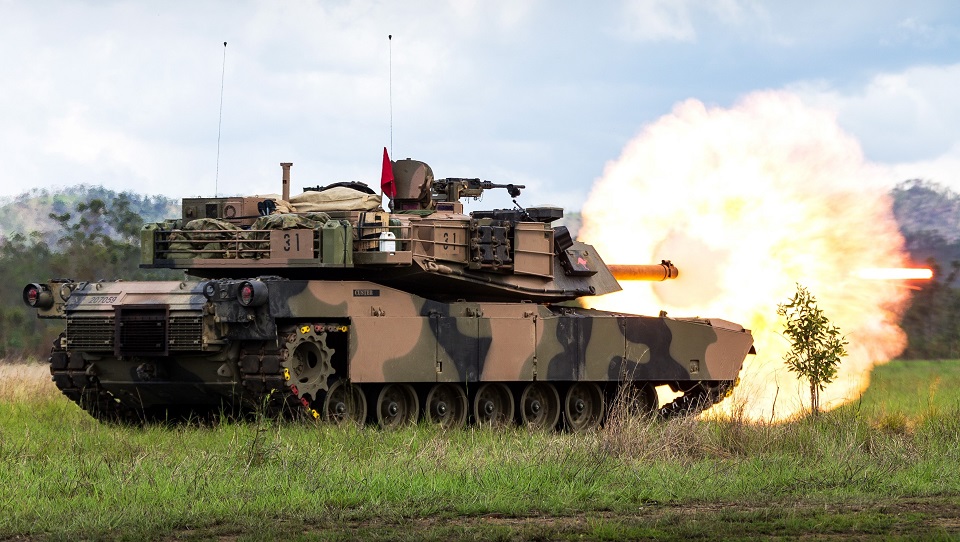Ukraine has been asking Australia for its old M1A1 Abrams tanks. Australia, however, has not paid much heed to the request despite its public commitment to support Kyiv to fight Russia.
Kyiv, having previously made a public appeal via an attention-grabbing video last year, is reportedly in the process of formalizing another request to obtain the Australian Army’s aging M1A1 Abrams tanks.
These tanks, set to be replaced by upgraded models, are sought after by Ukraine as it seeks to bolster its military capabilities against the Russian military.
Citing Kyiv-based sources familiar with the matter, ABC News reported that Ukraine is preparing to approach the Australian government with a comprehensive plea, which includes not only the transfer of tanks but also vital ammunition crucial for the nation’s security amidst the ongoing conflict.
Meetings held in recent weeks involving high-ranking officials such as Ukrainian Defence Minister Rustem Umerov have reportedly included discussions on approaching the Australian government to secure the donation of the entire fleet, comprising 59 tanks.

These aging M1A1 Abrams tanks are slated for replacement next year by the upgraded M1A2 version, also manufactured in the United States.
This move follows Ukraine’s previous calls on Australia to join an international “tank coalition.” Last year, Ukraine creatively appealed to Canberra by using a well-crafted trailer that combined scenes from the movie Mad Max with footage from the Australian Army’s armored corps exercises.
They requested assistance from Australia to supply its older US-made M1A1 main battle tanks as they prepared for a counteroffensive. It is believed that Kyiv formally submitted a request for 14 of the Army’s aging tanks, along with a comprehensive training program.
The request faced opposition from the Labor Party due to the costly requirement of sending the vehicles to the United States before transferring them to Ukraine.
However, recent indications suggest a possibility of conducting essential maintenance of tanks in Europe.
Despite this, the Australian Defence Department has not confirmed whether it has received the latest requests from Ukraine, specifically regarding the Abrams tanks.
On the other hand, Defence Minister Richard Marles, speaking during a visit to Jakarta, clarified that while Abrams tanks are currently not under consideration, Australia continues to engage closely with Ukraine to address its needs.
Does Australia Hold Back On Weapon Support For Ukraine?
The request comes amid reports of desperate need for military support and ammunition in Ukraine, which has been ravaged by conflict.
While several European countries are intensifying their efforts to supply weapons to Kyiv, Australia has faced criticism in recent months for what many perceive as a lack of generosity in providing military aid.
In January 2024, the Australian government officially turned down a request from Ukraine to supply Australia’s fleet of retired Taipan helicopters.
Read More
The decision came after the 45 Taipan MRH-90 aircraft were decommissioned last year following a crash in Queensland that resulted in the tragic loss of four Defence personnel during a training exercise.
Last year, Ukraine also sought the Hawkei light armored vehicle from the Anthony Albanese-led Australian government, but the request was rejected by the Australian Army, citing braking issues and logistical challenges in supporting the vehicle on the battlefield.
Another potential asset of interest to Ukraine is the retired F/A-18 Classic Hornet fighter jets from the Royal Australian Air Force (RAAF).
RAVN, an American aviation company initially tasked with disposing of these aircraft, considered relocating them to the US for use as “enemy” planes in training exercises.
However, RAVN’s contract lapsed in December 2023, leaving the Australian government in full control of the jets’ fate. A condition report identified 14 of the 41 airframes in optimal condition, capable of being made airworthy within four to six months for an additional two years of service.
The decision on whether to supply these fighter jets to Ukraine remains uncertain despite the Australian government’s affirmation that it will support Ukraine actively.
Australia stands out as one of the largest non-NATO contributors to Ukraine’s war effort. Canberra’s commitment extends beyond military support, as it has implemented extensive sanctions targeting Russian politicians, military commanders, and business figures.
In a recent statement, Defence Minister Richard Marles highlighted a $50 million contribution to a UK-operated fund supporting Ukraine, emphasizing Australia’s dedication to standing by Ukraine until a resolution is achieved on its terms in the protracted conflict.
“It is absolutely essential that Ukraine is able to resolve this conflict on its terms, and we understand that it will be protracted; we’ve been saying that for a long time now, and we will stay with Ukraine as long as it takes,” Marles said.
- Contact the author at ashishmichel(at)gmail.com
- Follow EurAsian Times on Google News